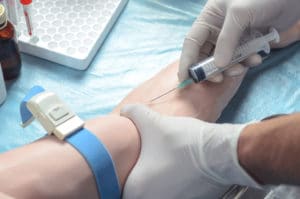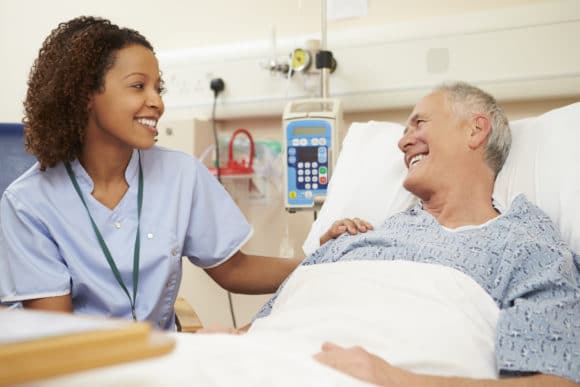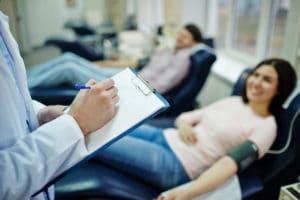
What Do Phlebotomists Do?
The heart of what phlebotomists do is draw blood. This could be done for testing, transfusions, research or blood donations. It’s important phlebotomists understand the purpose for the blood draw so they take the correct amount and label it properly.
Where Do Phlebotomists Work?
Hospitals
Phlebotomists working in a hospital might be called to draw blood from a patient’s room, or they might work in the lab drawing blood from patients who come to them. Since phlebotomists spend their entire day drawing blood, you can be sure they’ll know the best way to find your vein and get what they need as quickly and painlessly as possible. 
Medical and Diagnostic Labs
If you’ve ever had to go to a lab for a blood test, you’ve probably seen a phlebotomist. Before drawing your blood, your phlebotomist will match the laboratory requisition form to specimen tubes. They might also enter patient and specimen information into a database.
Blood Donor Centers
At blood donor centers, phlebotomists need to determine donor suitability from interview results, vital signs and medical history. They may also conduct hemoglobin tests to ensure donor iron levels are normal and calibrate machines used for things like plasma collection. 
Doctors’ Offices
It might be hard to tell if you’re seeing a nurse, medical assistant or phlebotomist at your doctors’ office. Each role is responsible for drawing blood, but phlebotomists specialize in doing so. They might also transport specimens from your doctors’ office to the lab for testing.
How Easy is it to Get a Phlebotomist Job?

What Kind of Education Do I Need to Become a Phlebotomist?

* Individuals seeking to enter this career field may be subject to screenings such as, but not limited to, criminal background checks and drug/alcohol testing prior to externship, to attain occupational licensure/certification or employment, and throughout their careers. ** Carrington College prepares students to take appropriate certification and licensure exams related to their individual majors. The College does not guarantee students will successfully pass these exams or be certified or licensed as a result of completing the program. Credential preparation varies by location. 1 https://www.bls.gov/ooh/healthcare/phlebotomists.htm#tab-1. Data reflects a national projected percentage change in employment from 2014-2024 and may not reflect local economic conditions. 2 While some employers may not require this level of education, it can help better prepare you for the responsibilities of this role. 3 Bureau of Labor Statistics, U.S. Department of Labor, Occupational Outlook Handbook, 2016-17 Edition, Phlebotomists, on the Internet at http://www.bls.gov/ooh/healthcare/phlebotomists.htm (visited March 23, 2017). https://www.onetonline.org/link/summary/31-9097.00